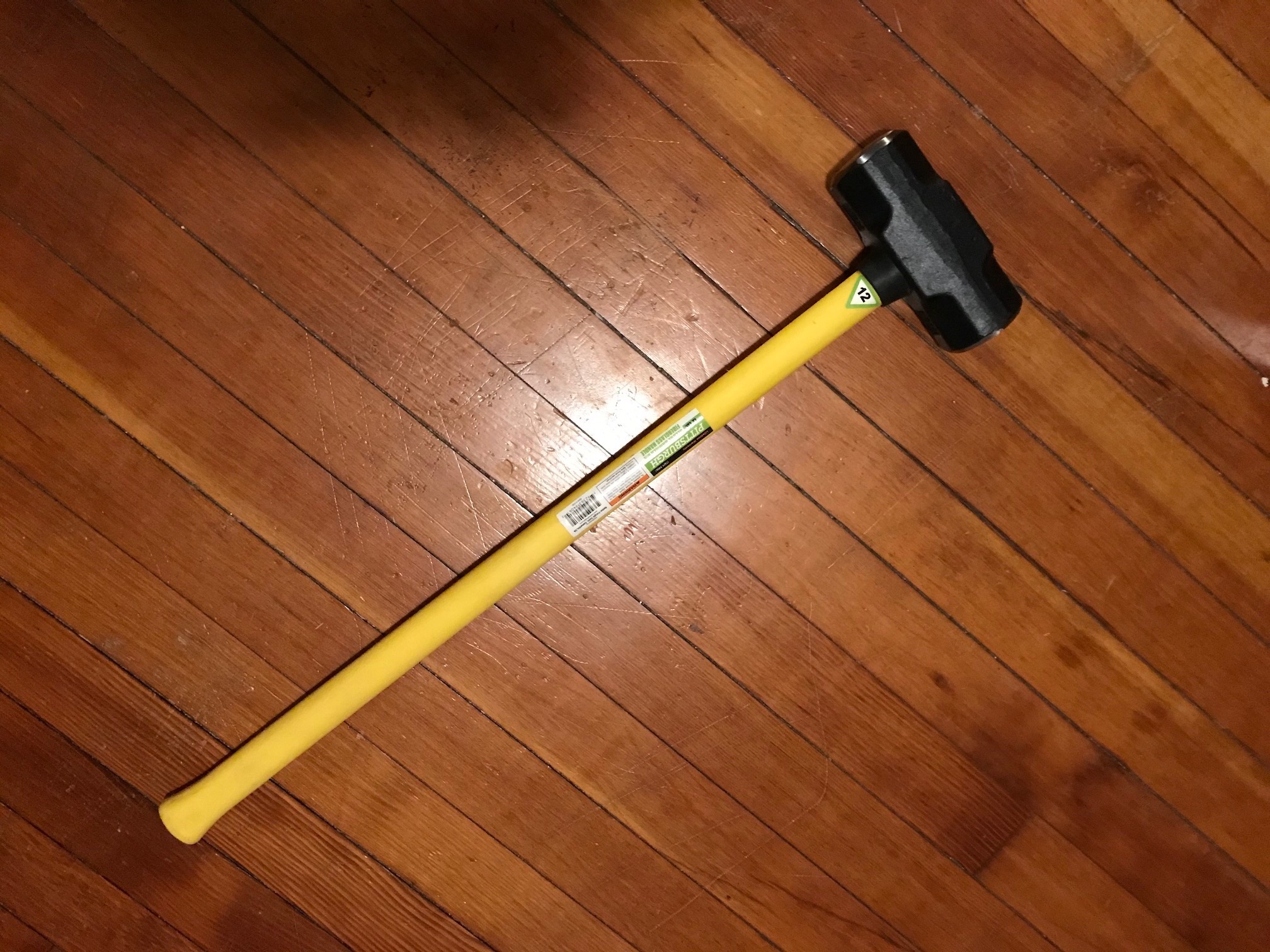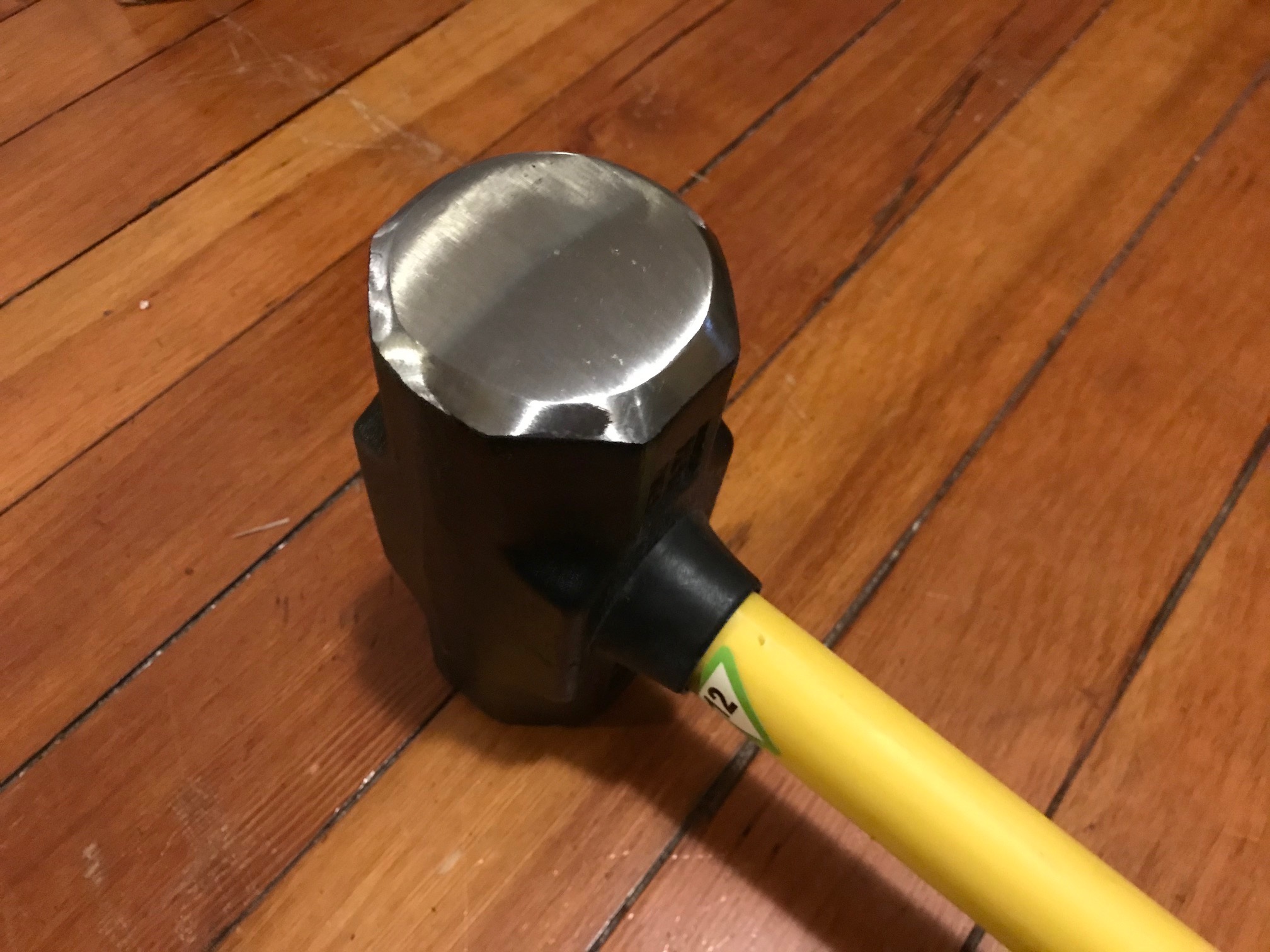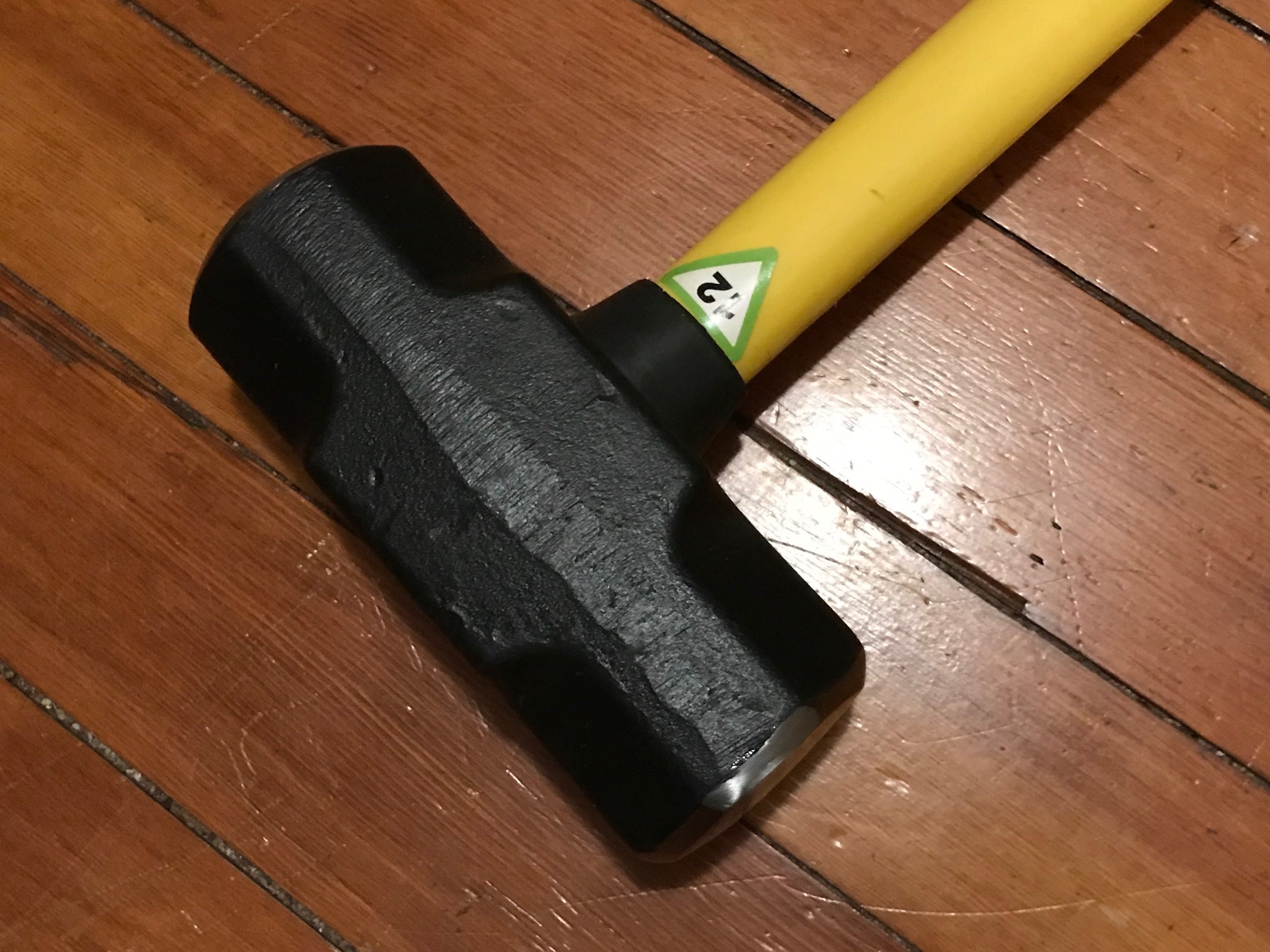2019 Harbor Freight Sledgehammer with Fiberglass Handle, 1055 ppm Lead — Reminder: tools are not toys!
 When tested with an XRF instrument, the (Harbor Freight) Pittsburgh brand sledgehammer pictured here had the following readings:
When tested with an XRF instrument, the (Harbor Freight) Pittsburgh brand sledgehammer pictured here had the following readings:
Black painted metal of hammer:
- Barium (Ba): 39,200 +/- 3,900 ppm
- Bromine (Br): 242 +/- 36 ppm
- Tin (Sn): 169 +/- 65 ppm
- Zinc (Zn): 610 +/- 141 ppm
- Copper (Cu): 603 +/- 210 ppm
- Iron (Fe): 218,900 +/- 16,000 ppm
- Vanadium (V): 62,300 +/- 4,000 ppm
- Titanium (Ti): 129,300 +/- 8,200 ppm
- Molybdenum (Mo): 2,055 +/- 216 ppm
- Cobalt (Co): 15,600 +/- 1,700 ppm
- Manganese (Mn): 10,700 +/- 1,500 ppm
Continue reading below the image.
 Unpainted metal end of hammer:
Unpainted metal end of hammer:
- Chromium (Cr): 2,380 +/- 149 ppm
- Zinc (Zn): 421 +/- 155 ppm
- Copper (Cu): 594 +/- 262 ppm
- Iron (Fe): 988,900 +/- 1,700 ppm
- Manganese (Mn): 6,385 +/- 654 ppm
Continue reading below the image.
Yellow plastic handle:
- Lead (Pb): 67 +/- 6 ppm
- Barium (Ba): 808 +/- 110 ppm
- Zinc (Zn): 51 +/- 8 ppm
- Iron (Fe): 66 +/- 20 ppm
- Titanium (Ti): 1,004 +/- 274 ppm
Continue reading below the image.
 Black rubber collar joining handle and hammer end:
Black rubber collar joining handle and hammer end:
- Lead (Pb): 1,055 +/- 47 ppm
- Cadmium (Cd): 31 +/- 10 ppm
- Barium (Ba): 1,111 +/- 77 ppm
- Antimony (Sb): 59 +/- 22 ppm
- Bromine (Br): 112 +/- 9 ppm
- Tin (Sn): 44 +/- 19 ppm
- Zinc (Zn): 314 +/- 39 ppm
- Copper (Cu): 153 +/- 38 ppm
- Iron (Fe): 5,390 +/- 219 ppm
Test results are science-based, replicable, and accurate. Testing has been done for a minimum of 60 seconds per test, with tests repeated multiple times for each component to confirm the accuracy of the results. A freshly-calibrated high-precision XRF instrument (specifically designed and configured for testing consumer goods) is used for all test results reported on this website.
How much Lead is “too much” Lead?
For context, the amount of XRF-detectable Lead that is considered unsafe (and illegal) in a newly-manufactured item “intended for use by children” is anything 90 ppm or higher in the paint, glaze, or coating, and anything 100 ppm or higher in the substrate. Tools are not covered by this regulatory standard (for total Lead content, as detectable with an XRF instrument) — or any regulatory standard for toxicity, as far as I know — because regulatory agencies do not consider these items ever to be “items intended for use by children.” I have even tested tools that were ostensibly sold for children (in “beginners tool kits” at Home Depot) that are positive for unsafe levels of Lead.
Takeaway
Tools (under the current manufacturing regulatory conditions) are never appropriate “toys,” so do not ever let children — especially young children — handle them without gloves! And for adults: in light of the extreme toxicity of Lead, and its common use in paint and other coatings as well as the underlying substrates in a lot of tools, YOU need to also handle tools appropriately. Use gloves and lots of hand washing (as well as other protective gear) whenever possible. While more and more PROS, especially larger businesses, are becoming aware of this issue and are adopting these sensible precautions, disturbingly, this information hasn’t trickled down to most tool-wielders yet — especially home/backyard mechanics/builders/fixers!
Some additional reading…
- To see more tools I have tested, click here.
- To see more hammers I have tested, click here
- To read more about the type of testing I do, click here.
As always, please let me know if you have any questions.
Thank you for reading and for sharing my posts.
Tamara Rubin
#LeadSafeMama
Never Miss an Important Article Again!
Join our Email List








 When tested with an XRF instrument, the
When tested with an XRF instrument, the  Unpainted metal end of hammer:
Unpainted metal end of hammer:
 Black rubber collar joining handle and hammer end:
Black rubber collar joining handle and hammer end:
Hmmm… I am not seeing any actual lead reading listed in the full list below the picture of the item. Am I misunderstanding something?
There are four pictures and four sets of readings. Scroll down through the entire post.